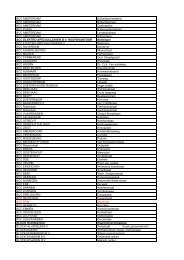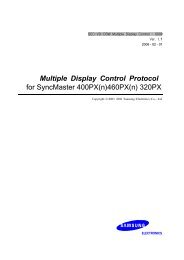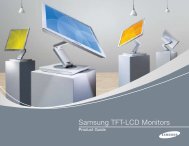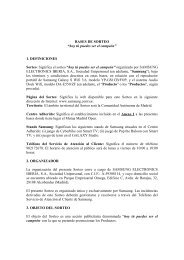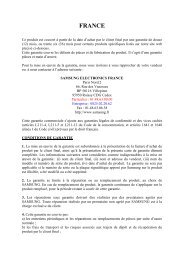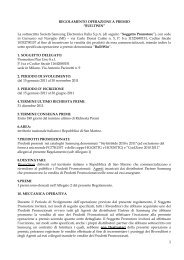2 / Samsung Electronics Sustainability Report 2012 /
2 / Samsung Electronics Sustainability Report 2012 /
2 / Samsung Electronics Sustainability Report 2012 /
You also want an ePaper? Increase the reach of your titles
YUMPU automatically turns print PDFs into web optimized ePapers that Google loves.
Management Structure<br />
<strong>Samsung</strong> <strong>Electronics</strong>’ GHG emission management structure is as follows.<br />
GHG Management Committee<br />
Scope 1, 2 Emissions Management<br />
Scope 1, 2 Emissions Management Process<br />
Emission Management Structure The operation sites included in the GHG emission management scope are production plants and buildings under<br />
direct operational control of <strong>Samsung</strong> <strong>Electronics</strong>. Monthly GHG emission data from eight Korean plants and buildings, 30 overseas production plants,<br />
and 76 non-production subsidiaries (sales, logistics, and R&D centers) are collected through the environmental management system, G-EHS. The emission<br />
data from each site are checked against targets and improvement measures are formulated. The GHG emissions data and reduction achievements<br />
against targets are reported to environmental managers at each site, in addition to the corporate environmental affairs management team and top<br />
management.<br />
Emission Calculation Method GHG emissions were calculated with management data at each site and the national guidelines of each country as well<br />
as international standards including the IPCC Guidelines, ISO 14064 were used as reference for matters not specifi ed in the national guidelines.<br />
GHG Emissions (Scope 1, 2) <strong>Samsung</strong> <strong>Electronics</strong>’ GHG emissions intensity in 2011 was reduced to 4.46 tons/KRW 100 million. which was 13% lower<br />
than 2010 fi gures. We have taken various measures including the installation of facilities for reducing GHG emissions from indutrial processes, improvement<br />
in energy effi ciency of production facilities, installation of high effi cient facilities and will continue to implement various GHG reduction measures.<br />
GHG Emissions Intensity (tons CO2/KRW 100 million)<br />
Korea<br />
Global<br />
Name<br />
Green Management Committee<br />
Eco-Product Council<br />
GHG/Energy Executive Committee<br />
GHG/Energy Committee<br />
Category<br />
Target<br />
Actual<br />
Actual<br />
Indicator<br />
GHG emission intensity: Total CO 2 emissions 1 ÷ (Sales[Korea] / price index 2 )<br />
1 Total GHG emissions from production plants in Korea, expressed in CO2-equivalent<br />
2 Producer price index in Bank of Korea public notice (Base year 2005: PPI = 1)<br />
Calculation Method (Global): Global total CO 2 emissions / Global Sales<br />
10 / <strong>Samsung</strong> <strong>Electronics</strong> <strong>Sustainability</strong> <strong>Report</strong> <strong>2012</strong> /<br />
Detail<br />
Discuss and make decisions on corporate-level strategic decisions on<br />
climate change response<br />
Set development goals and implementation strategies on high energy<br />
effi ciency and low power-consumption products<br />
Establishment and implementation of production plant GHG reduction<br />
strategy<br />
Climate change risks analysis and monitoring<br />
2009<br />
6.85<br />
5.83<br />
4.35<br />
CEO<br />
2010<br />
Host<br />
Head of CS Environmental Center<br />
Head of CS Environmental Center<br />
Head of Environmental Strategy team<br />
5.65<br />
5.11<br />
4.15<br />
Twice a year<br />
Twice a year<br />
Twice a year<br />
Frequency<br />
Five times a year<br />
2011<br />
4.62<br />
4.46<br />
3.70



